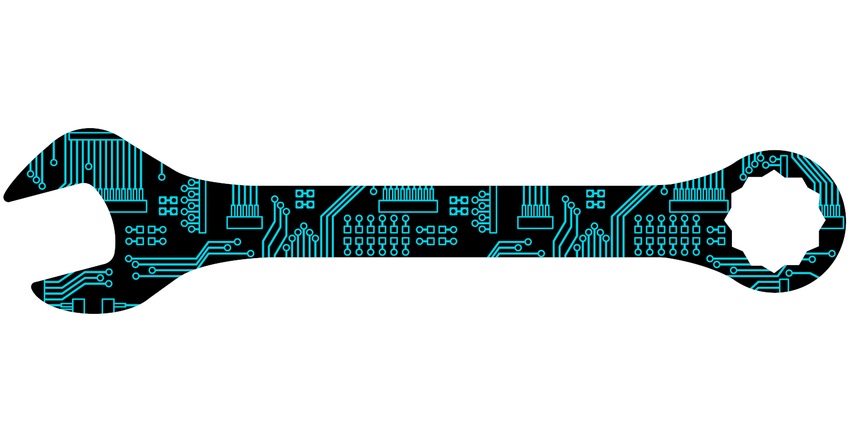How Machine Health Monitoring Can Improve Labeling Operations
Previously called predictive maintenance, Machine Health monitoring leverages today’s advantageous IoT and AI technologies to optimize your labeling and other packaging operations.

Improved equipment reliability and uptime are two of the many benefits of monitoring machinery continuously using predictive maintenance tools. Powered by the Internet of Things (IoT) and artificial intelligence (AI), what has come to be known as Machine Health monitoring can alert maintenance teams when issues are detected and indicate what needs to be done to fix the problem.
But the use of these insights to drive process improvement aside from traditional failure reduction is still in its infancy. When Machine Health monitoring is fully harnessed, its impact on process improvement and waste reduction will be even greater than its role in eliminating mechanical failure.
A good example of what these benefits might be can be seen in your labeling operation.
To begin, a quick lesson in how plastic bottles are labeled. First, printers take a substrate — usually some sort of polymer material — and use various methods and inks to create what will become a finished label. The label material arrives in the form of rolls that contain thousands of linear feet of label impressions. These are loaded onto machinery that cuts and affixes, often with glue, a precisely measured length of the label onto the bottles, usually after the bottles are filled and capped.
The label has to be cut cleanly and in precisely the correct length to ensure that it fits exactly, looks right, and doesn’t create particles of shredded label material that could damage equipment.
Common label defects include misalignment, ragged cut, and flagging, which is when part of the label sticks out. Sometimes, the label is just plain missing.
Here are a couple of real-use cases where Machine Health monitoring could significantly improve labeling operations.
Use case #1: Ensure clean cuts.
A critical factor in labeling 600 to 800 bottles a minute is making sure that the machinery edge that cuts the label from the film strip is sharp and that related parts of the labeling equipment are aligned and running properly. Depending on human visual inspection of the process to assure quality is too spotty and ineffective, as thousands and even tens of thousands of poorly labeled bottles can pile up in a production line before anyone notices a defect.
Automatic defect sensors don’t always work as advertised. If a defect is small enough, or the sensor is not perfectly aligned, it will pass undetected, allowing bottles to get to store shelves where they present an ugly package to the consumer. Some bottles get through the whole line without a label! When these unlabeled bottles get through the supply chain, they get tossed due to their “mystery” content, causing unnecessary waste.
Companies that have instituted auditing programs require operators to check for label quality every 15 to 30 minutes. That’s better than no checks, but it still relies on a bit of luck to detect the fault early. If 1,200 bottles are coming off the line each minute, 40,000 bottles with bad labels may be produced between checks. It is not fun to clear those off a line, speaking from personal experience.
What if we could detect the wear on components that affect the labeling process and correct issues before poorly labeled bottles are produced? One of the leading causes of poor performance in roll-fed labelers is a poor cutoff of individual labels from the label roll. If the cut is not clean and precise, the application will fail. Additionally, shards of miscut labels start to pile up in the equipment, leading to other problems. What if we could detect when the blades on the cutter drum started to wear, leading to poor cuts?
Predictive analytics can lead us to this real-time process monitoring of labeling performance. It can determine when the cutter blades dull to the point where they start cutting raggedly. At that point, we can exchange the blades for new ones — during regular downtime instead of an unplanned stop — making poor labeling due to bad cuts a thing of the past.
Use case #2: Beware of label variations.
Countless times in labeling operations around the world, a roll of material runs out, a new roll of seemingly identical material replaces it, and then problems ensue. Did the new roll cause the problems?
Analyzing Machine Health data from the “good” running roll and comparing it to data from the “bad” running roll is likely to provide clues. Perhaps we find that the replacement roll led to greater vibration and the drive motors drawing higher amperage, a sign of stress. It turns out that differences in ink dye lots can lead to differences in label material, which can affect machine performance.
Many times, insights gleaned from analyzing the data captured by the new technology tools confirm what frontline workers know anecdotally and have learned from experience.
The bottom line is that insights to improve quality throughout any manufacturing process are now more readily available as a result of the information feedback loops made possible by today’s technology. The value derived from incorporating these predictive analytical tools can be significant, and that’s perhaps one of the greatest lessons to be learned.
About the Author(s)
You May Also Like




